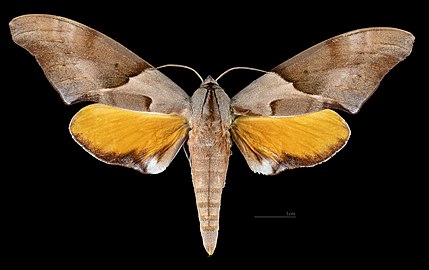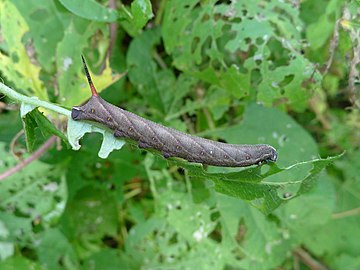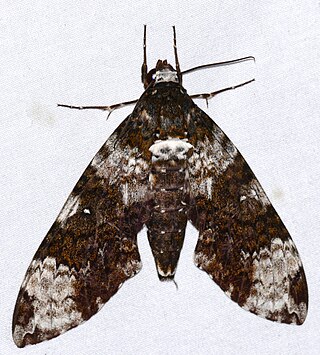
Manduca albiplaga, the white-plaqued sphinx, is a moth of the family Sphingidae. It was first described by Francis Walker in 1856.

Cocytius antaeus, the giant sphinx, is a moth of the family Sphingidae. The species was first described by Dru Drury in 1773.
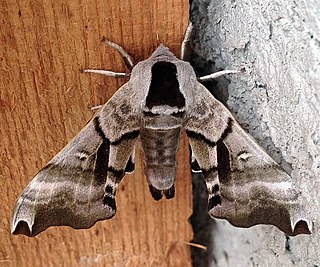
Smerinthus cerisyi, the one-eyed sphinx or Cerisy's sphinx, is a moth of the family Sphingidae. The species was first described by William Kirby who named the species in honor of Alexandre Louis Lefèbvre de Cérisy in 1837.

Pachysphinx modesta, the modest sphinx or poplar sphinx, is a moth of the family Sphingidae. The species was first described by Thaddeus William Harris in 1839.
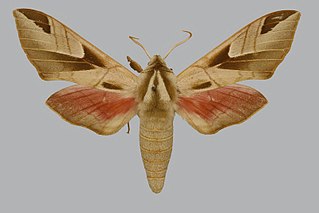
Leptoclanis is a genus of moths in the family Sphingidae, containing one species Leptoclanis pulchra, it is known from Brachystegia woodland from Angola and Zimbabwe to Zambia, the Democratic Republic of the Congo and southern Tanzania.

Amphimoea is a monotypic moth genus in the family Sphingidae erected by Walter Rothschild and Karl Jordan in 1903. Its only species, Amphimoea walkeri, the Darwin hawkmoth, described by Jean Baptiste Boisduval in 1875, is found from Mexico south to Argentina.

Thamnoecha is a monotypic moth genus in the family Sphingidae erected by Walter Rothschild and Karl Jordan in 1903. Its only species, Thamnoecha uniformis, first described by Arthur Gardiner Butler in 1875, is known from the Himalayas.

Agrius luctifera is a moth in the family Sphingidae. It is found in Indonesia and New Guinea.

Neopolyptychus pygarga is a moth of the family Sphingidae. It is known from forests in western Africa, including Cameroon and Nigeria.

Neopolyptychus consimilis is a moth of the family Sphingidae. It is known from Savanna from southern Sudan to the Congo.

Polyptychoides digitatus is a moth of the family Sphingidae. It is known from heavy forest up to 8,000 feet from Liberia and Angola to Uganda and western Kenya.
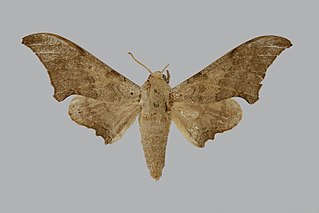
Falcatula cymatodes is a moth of the family Sphingidae. It is known from lowland forests in Ivory Coast, Ghana, Nigeria, Cameroon, Gabon, Uganda, and the Central African Republic.
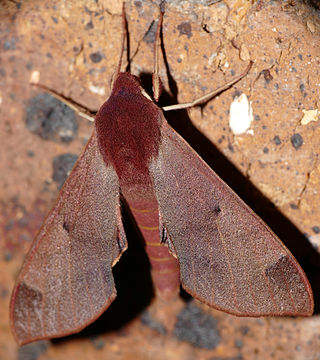
Afroclanis calcareus is a moth of the family Sphingidae. It is known from Brachystegia woodland from northern South Africa, Zimbabwe and Mozambique to Malawi, Zambia, the Democratic Republic of the Congo and Tanzania.
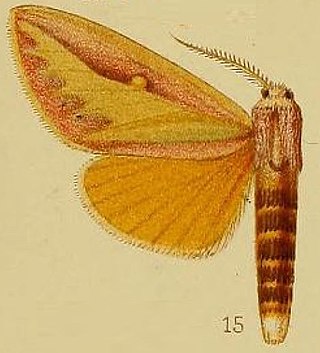
Leucophlebia afra is a moth of the family Sphingidae. It is found from Senegal to northern Uganda and Sudan in the east, and to Angola in the west.

Amphonyx rivularis is a moth of the family Sphingidae. It is known from southern Brazil.

Neogene reevei is a moth of the family Sphingidae first described by Herbert Druce in 1882. It is known from Paraguay, Argentina and Brazil.
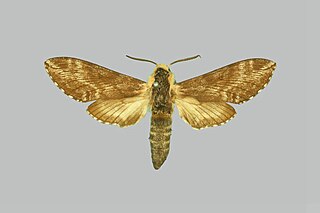
Neogene corumbensis is a moth of the family Sphingidae. It is found in Argentina and Bolivia.

Meganoton nyctiphanes, the dull double-bristled hawkmoth, is a moth of the family Sphingidae.
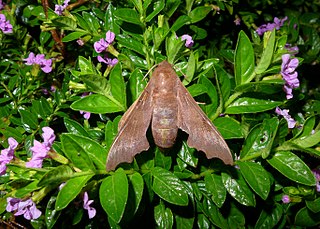
Cypa decolor is a species of moth of the family Sphingidae first described by Francis Walker in 1856.
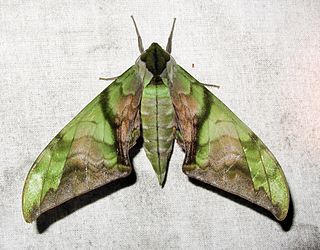
Callambulyx junonia, the eyed pink-and-green hawkmoth, is a species of moth of the family Sphingidae first described by Arthur Gardiner Butler in 1881.

